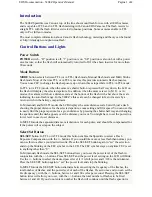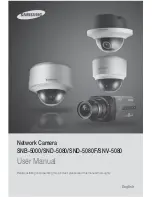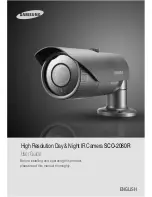
Handbook for SXV-M5 Issue 1 June 2004
21
although the LX200GPS still has a software issue at the time of writing. All other
mounts will use the guider output from the camera. Once the above connections have
been made, you are ready to start up the system.
Starting to guide:
Power up the camera and computer, and start the telescope drive. Click on ‘Set
Program Defaults’ and examine the current settings. In the ‘Telescope Guiding’ box,
set the interface selection to ‘LX200’, or ‘Via Control box’ (ST4 output of camera), as
appropriate. Also select ‘COM1’ or ‘COM2’ if using serial control, according to
availability - ‘COM1’ is the 9 pin port provided on the rear panel of most portable PC
computers.
Now adjust the other values as follows:
1.
Set ‘RA Pixels per sec’ and ‘Dec Pixels per sec’ to 5.
2.
Set all backlash and hysteresis values to 0.
3.
Set ‘Ignore drift < 1 pixel’ to OFF.
4.
Set ‘70mS delay between direction changes’ to ON.
5.
Set ‘Default guide training time’ to 2 secs.
These values can be refined later, but should work reasonably well with most
telescopes.
You can now test communications between the computer and telescope mount, as
follows:
1.
Press ‘Set slew values’, followed by ‘Save Program Defaults’.
2.
Select ‘Telescope control’ in the ‘File’ menu.
3.
Press each button in turn and observe the LED lamp at the rear of the camera.
As each is pressed, the lamp will brighten and change colour between red and
green. The telescope will also begin to slew in the appropriate direction. This
slew will be slow (unless you have deliberately selected a fast slew mode via
the telescope controls) and so you will need to observe it through the telescope
eyepiece, by watching stars drift by. If the LX200 output is in use, the LED
will not respond, but the ‘scope will still slew correctly.
If all is well, you can proceed to testing the guiding system itself, otherwise, check
your setup and confirm that the correct COM port etc. is selected.
Refit the CCD camera to the telescope and rotate it so that the mounting bracket is
aligned approximately East-West. Focus in the usual way on a star and then point the
‘scope towards the object you have selected for imaging. I recommend something
near the celestial equator and with a reasonable number of useful guide stars around
it, to make life a little easier!










































